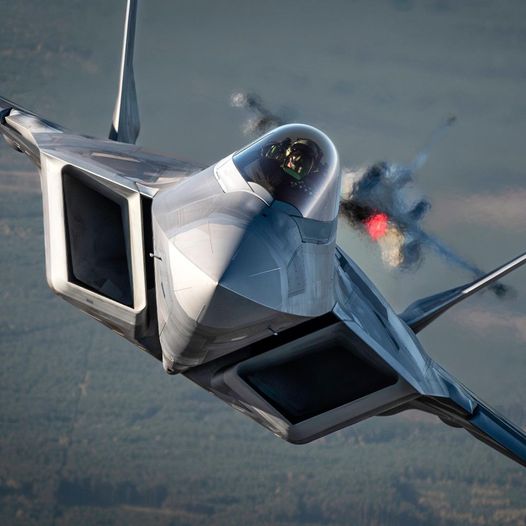F-22 production stopped in 2011. However, a few years later, many prominent voices were calling for a restart of the program – but it never happened.
The problem is simple: not enough F-22 Raptor stealth fighters to go around. And we can’t make anymore.
F-22: No More To Be Built…
F-22 production stopped in 2011. However, a few years later, there were many prominent voices calling for a restart of the program – but it never happened.
A wide range of interwoven variables contributed to the eventual decision several years ago not to restart F-22 production. Senior Air Force leaders cited budget as the primary reason, yet many in Congress and at the Pentagon were calling for a massive restart of the F-22 program to expand the fleet to a more impactful size.
F-22: An Amazing Fighter Jet
When the F-22 blasted onto the scene in 2005, it was heralded as a first-of-its-kind breakthrough air supremacy platform.
While there are now roughly 169 F-22s currently, the original plan was to build a much larger fleet of stealthy F-22s Raptors. However, during the height of U.S. military counterinsurgency in Iraq and Afghanistan, F-22 production was cut short abruptly.
A great-power war possibility and the rising threat of China and Russia seemed to fade into the background beneath the fury of counterterrorism and counterinsurgency, so perhaps planners suffered from too much of a “here-and-now” kind of short-term vision.
In contrast, a longer-term assessment might have recognized the long-term threat China was already beginning to evolve into.
F-22 on the World Stage
Therefore, had the F-22 production line not been cut short far too soon, then a much more sizeable and daunting fleet would currently hold our adversaries at risk. Looking back on the Iraq and Afghanistan years, many Pentagon leaders and weapons developers regard the decision to stop F-22 production as a massive error.
Was the discussion about re-starting the line an effort to correct the error? Were budget concerns truly the reason? One thought that seems to make sense is that in retrospect when the decision not to restart the F-22 production line was made, just how far along was the 6th-generation aircraft.
Conceptual work and early subcomponent prototyping, at the very least, was already underway on the 6th-generation stealth fighter and it may have been showing great promise. As the 6th-generation aircraft is now airborne, it may have been much further along than initially thought. Developmental technologies such as digital engineering have enabled the 6th-generation prototypes to become airborne years ahead of what had initially been planned.
An important note to consider is perhaps at the time decisions were being made about restarting the F-22 line, there was massive progress and promise with 6th-generation lurking just beneath the radar of public view.
This would make sense, as the Next-Generation Air Dominance (NGAD) program is thought of as more of an F-22 replacement than an F-35-like aircraft.
For instance, a new high-speed, stealthy 6th-generation air supremacy fighter could complement continuously upgraded multi-role F-35s.
 This model is available in multiple sizes from airmodels.net – CLICK ON THE PHOTO TO GET YOURS.
This model is available in multiple sizes from airmodels.net – CLICK ON THE PHOTO TO GET YOURS.
